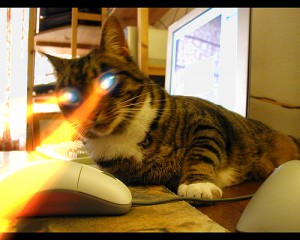 I wrote a post for The IPKat blog last week about a right of publicity suit filed in New York by Lindsay Lohan against the makers of the Grand Theft Auto V video games. The law is N.Y. Civil Rights Law Section 50 and 51. I wrote two other posts on my own blog, here and here, about New York right of publicity cases.
I wrote a post for The IPKat blog last week about a right of publicity suit filed in New York by Lindsay Lohan against the makers of the Grand Theft Auto V video games. The law is N.Y. Civil Rights Law Section 50 and 51. I wrote two other posts on my own blog, here and here, about New York right of publicity cases.
I find right of publicity a particularly interesting law, as it is a privacy right and also an intellectual property right. The law protects the commercial value of one’s identity, even if one is not famous. Indeed, our image may be used to promote a product, even if we are not famous. Think of the smiling faces looking back at you while you shop for cereals or cookies.
Image is flikr1262, courtesy of Flickr user flikr pursuant to a CC BY 2.0 license




